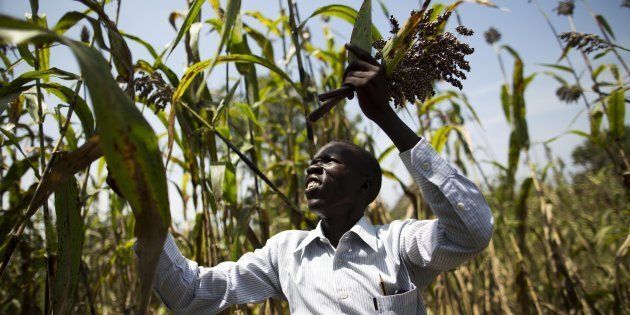
The recent data from the National Crop Estimate Committee painted a troubling picture of the South African sorghum industry. This is a crop that was once seen as key to the development of the biofuel industry in South Africa and, in turn, job creation in rural areas. The data shows that farmers increased the area planted to almost all grains and oilseeds with the exception of sorghum, which declined 24% year-on-year to 36,800 hectares. In fact, looking at the database dating back from 1936, this year South Africa planted the smallest sorghum crop ever.
In 2014, sorghum was a promising crop in South Africa's agriculture, boosted by the hope of the development of the biofuel industry, job creation and a new market for farmers, particularly black smallholder farmers. Mabele Fuels and Industrial Development Corporation (IDC) were the first companies to embrace this initiative. Mabele Fuels was to build a processing plant in Bothaville, with a potential to create roughly 16,700 jobs and a market for farmers in that area. In a similar vein, the IDC was going to create jobs and a much-needed market opportunity for smallholder farmers in the Eastern Cape province.
These plants were going to utilise roughly 500,000 tons of sorghum a year, which is triple the volume that South Africa was producing then. The government was the key player in the processes, with an aim to create jobs, boost the economy, create a market for smallholder farmers and revive the South African sorghum industry. Unfortunately, the government incentives fell short and the processes did not materialise.
In fact, by early 2016, it was clear that the biofuel industry was a lost dream and farmers were opting for other opportunities, such as accessing new export markets. This was somehow a difficult task as South Africa is not an established exporter of sorghum. In fact, South Africa's sorghum exports are concentrated in southern Africa, with a key market being Botswana - accounting for an average of 94% of South Africa's total sorghum exports.
Fellow agricultural economist at the Agricultural Business Chamber Tinashe Kapuya and I wrote a research article in early 2015 that aimed to identify potential new markets for South Africa's sorghum industry. We found Cameroon, Sudan, and Ethiopia as the only attractive markets on the continent, having a potential for growth and low import tariffs. Globally, Japan and Mexico were identified as the large markets, with zero rated tariffs for South African sorghum exports.
Europe also represented a number of opportunities, which was then a modest import duty of 1.6% under the Trade and Development Co-operation Agreement. The key question that emerged from our study was whether South Africa would be competitive enough in these markets, in other words, be able to produce the required volumes at lower costs than its competitors. This was left unanswered and some farmers were still keen to explore these opportunities and progress was disrupted by the 2015/16 drought.
Despite the aforementioned challenges, the biofuel initiative is not a completely lost cause. South Africa can still revive the biofuel industry, which will, in turn, stimulate job creation in both manufacturing and farming businesses. More importantly, this would present a lucrative opportunity to new black farmers, particularly in the former homelands.
Sorghum is an African crop. Ideally, South Africa is supposed to protect and develop its heritage in a similar fashion to how Mexico handles the maize crop. The other way of creating value for sorghum would be to explore its nutritional benefits and perhaps promote it on the food and beverage chain.
Anyone who has spent time with smallholder farmers would know that one of their key challenges has always been access to markets. Therefore, the biofuel industry would have presented such a great opportunity.
More importantly, sorghum is an African crop. Ideally, South Africa is supposed to protect and develop its heritage in a similar fashion to how Mexico handles the maize crop. The other way of creating value for sorghum would be to explore its nutritional benefits and perhaps promote it on the food and beverage chain. South Africa's sorghum consumption has been on a declining trend for some time - from levels of 250,000 tons in the early 2000s to 159,824 tons in the 2015/16 marketing year, according to data from Grain SA. About 55% of this is consumed in a form of meal, rice, and grits, and the rest consumed in a form of pet food, livestock, and malting.
Overall, farmers are in business, if the sorghum crop is not giving better returns due to undeveloped market opportunities, they will switch to other profitable crops and leave this industry to fail. The losers in this process, however, would be the potential new entrants who had hoped to make a living out of the biofuel initiatives. Given the growing unemployment rate in the country and limited market opportunities for most smallholder farmers, if the biofuel initiative is revived, there could be more upstream and downstream socio-economic benefits for the country.
Also, development of higher yielding seed varieties and expansion of export markets could be the other way of reviving the industry. Globally, there is a stable demand for sorghum, but for South Africa to participate in such an environment, the country would need to increase volumes and be able to sell at competitive prices. This calls for more research and creative ideas to save the sorghum crop in South Africa.
This blogpost is an extract from my Business Day Column, published on 02 February 2016
